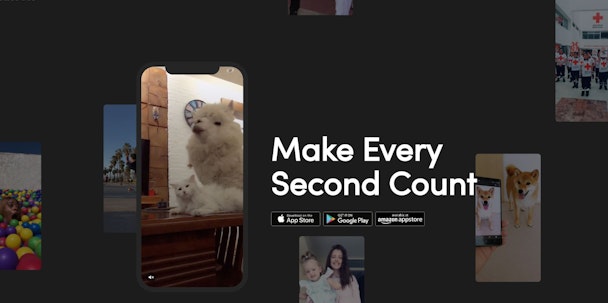'Advertisers ask if it's worth the risk': users flock to troubled TikTok, but will brands?
With Bytedance's video apps TikTok and Douyin reportedly hitting an estimated one billion regular users, TikTok's data and safety protocols have attracted international scrutiny. These troubles haven't seriously affected user growth yet but could impact brands considering the platform.

Is time running out for TikTok to address child and brand safety?
TikTok and Chinese twin Douyin are currently valued at $75bn, value driven with 15-second lip sync videos that reach a younger audience dropping away from rival social networks. In 2018, TikTok became the first Chinese social media app to be the most downloaded in the US. But it hasn't all been smooth sailing.
In February, the Federal Trade Commission (FTC) issued it a fine of $5.7m. It cited predecessor app Music.ly's "disturbing practices, including collecting and exposing the location" of children. It said “a significant percentage of users were younger than 13" and identifiable information like age, birthday and school was visible. The UK Information Commission is currently running a similar probe.
Kristin Lemkau, chief marketing officer of JP Morgan Chase, recently admitted that she had deleted the app off her kids' mobiles. “Should have done it a while ago”, she tweeted, worried about inappropriate content and online predators.
TikTok has since deleted the accounts of users it believes are underage.
Growing Pains?
Alex Malafeev, co-founder of Sensor Tower, an app analytics company that has been tracking its meteoric rise, said Douyin faced "occasional setbacks" in China around "problematic content". It that lost out on 15 million new users in India following the country imposing a two-week ban.
Its acquisition of the already-popular Musical.ly and a global ad campaign helped Douyin spill from China as TikTok but new installs are now slowing. Malafeev expects to see TikTok grow by around 40 to 50 million first-time users each month for the remainder of 2019, a number that would swell if it rolls out another well-funded advertising campaign.
"We see no direct connection between the rise of such concerns and a downturn in TikTok's new user growth outside of the short-lived ban in India," he said.
It boasts 200 million users in India.
A TikTok spokesperson acknowledged the concerns and said: "The work is never 'done' on our end".
Meanwhile, a New York Times op-ed questioned its data protection and warned that ByteDance is more fearful of the “Communist Party more than angry tweets from tweens outside the Great Firewall”.
To this TikTok said it "has a strictly independent decision-making process; we operate independently with our own product, engineering, and marketing teams. TikTok user data is stored and processed in the US, Singapore and other markets where TikTok operates via industry-leading third-party data centers."
Is TikTok addressing concerns?
Jim Stannard, head of digital, the7stars, said TikTok's start-up model means "practices such as user safety were brushed aside and retrofitted someway down the line." But if its plans to court advertiser dollars are to forge ahead then it will have to respond to the biggest issues brands have with the platform.
It's something most other social networks have faced, with many still in the process of trying to mature their processed. After brand safety issues hit YouTube, for example, it was forced to adopt better practices, pressure top influencers, ban comments on kid videos, and demonetise bad actors.
Stannard said: "As shown by the YouTube scandals, the world’s largest advertisers are prepared to pull or at least ‘pause’ spend if they deem necessary, and with TikTok still in its infancy it’s important to note that it’s much easier for brands to avoid an unproven platform altogether than it is to pull out of a platform that has already demonstrated its potential for returns."
This is all the more pertinent as marketers are still discovering what tactics work best on TikTok.
Stannard concluded: "While TikTok continues to rack up negative press around its user safety and exploitation advertisers may find themselves asking if it’s worth the risk.”
Angus McLean, director of digital at marketing and media consultancy Ebiquity said TikTok is improving its brand safety policies and guidelines and that it has a chance to "learn from those that have come before and stand on the shoulders of giants".
"It is facing all the same challenges of rapid growth and the need to scale technology, people and policies while building a business," he said.
"Challenges around privacy, content moderation, misuse of the platform by sexual predators, drug dealers, and teen bullying are not new and are still faced by Instagram, Snapchat and YouTube daily."
The app is meeting the issues at a "frenetic pace" but the "nature of the creative formats make it hard to police".
The additional scrutiny due to the young userbase. McLean said: "Even though it has a 13+ policy, any parent or teacher knows that is not the case in reality. To pretend otherwise is irresponsible." MediaKix data said that 60% of TikTok’s monthly app users are between 16-24 years old.
Ebiquity's recent brand safety report found that 65% of the UK’s top 100 advertisers had run ads in potentially non-brand safe environments. "Brands should be cautious when advertising in new platforms and environments, and make sure they scrutinise them from a brand safety perspective where relevant."
TikTok told The Drum that it is "continuously enhancing its safety features as a testament to its ongoing commitment to users around the world."
It pointed to features such as its age gate (fallible as a deterrent to younger users), its restricted mode (which employs algorithms to filter out inappropriate content) and its screen time management which can be deployed by parents.
Brands are joining the platform confident these hurdles have been handled. Dazed and Wimbledon are among the most recent to join TikTok.

